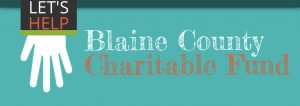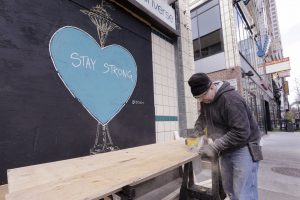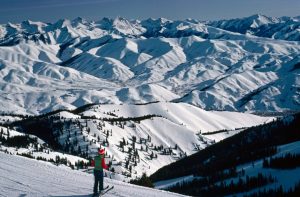From Dr. Archie
April 3, 2020B L A I N E I D A H O
From – Tom Archie MD, Ketchum, Idaho
Summary
COVID19 Transmission Edition
This is a single-issue edition of the InnerHealthMD Pulse. It is dedicated to the topic of how early and how long the SARS-CoV-2 virus is spread from infected individuals to others who have not yet been exposed.
I explain my rationale for….
a) early self-quarantine if suspicious of symptoms
b) early self-quarantine if someone in your house has suspicious symptoms
c) how long to remain in self-quarantine, and
d) why I disagree with CDC recommendations for duratation of self-quarantine and with hospital systems using CDC guidelines to recommend ending quarantine for known cases (or for symptom-probable cases).
There are links to original journal articles, all reported in March 2020.
I encourage individuals, physicians, and especially employers to review this information when establishing return-to-work (or return-to-grocery-shopping) timelines.
There are links to original journal articles, all reported in March 2020:
Surface Contamination &
Aerosolization
In a detailed study of 13 COVID19 patients at Nebraska Medical Center’s quarantine unit, most of whom had mild disease, 40 surfaces were repeatedly checked for the SARS-CoV-2 virus
The following were positive for the coronavirus:
-76.5% of all personal items 81.3% of exercise equipment, medical equipment (spirometer, pulse oximeter, nasal cannula), personal computers, iPads and reading glasses (mean of 0.217 copies/mcL)
-83.3% of cell phones (mean of 0.172 copies/mcL)
-64.7% of TV remote controls (mean of 0.230 copies/mcL)
-81% of samples from toilets (mean 0.252 copies/mcL)
-80.4% of all room surface samples
-75% of bedside tables and bed rails
-81.8% of the window ledges (mean concentration 0.219 copies/mcL)
-100% of all under-the-bed floor samples (mean of 0.447 copies/mcL)
-80% of ventilation grate samples (mean of and 0.819 copies/mcL)
-63.2% of in-room air samples (2.86 copies/L of air) – including well beyond 6 feet away
-66.7% of hallway air samples – outside-patient-confined rooms (transported by medical staff)
Virus found in GREATER amounts where drifting by air than on items touched
Virus was found on surfaces obviously not touched by patients (under the bed, window ledges) following air flow and eddies. Airflow modeling results strongly suggest that “virus expelled from infected individuals, including from those who are only mildly ill, may be transported by aerosol processes in their local environment, potentially even in the absence of cough or aerosol generating procedures.”
BOTTOM LINE If you have a new illness, please stay home until it is gone and stays gone for as long as 3-4 weeks after symptoms started. Help reduce spread!
In a study of 23 COVID19-hospitalized patients in Hong Kong,
Saliva viral load highest in the week 1 and declined with time
Longest viral shedding 25 days after symptom onset.
-50% of severe case shed virus in saliva >20 days
-23% of mild cases shed virus in saliva >20 days. C
-38% of severe cases shed virus in stool > 20 days
-14% of mild cases shed virus in stool > 20 days
There was no virus found in urine samples.
In a study of 9 COVID19-hospitalized patients in Germany, which included interesting observations on the ability to grow virus in culture after obtaining it from patients at different stages of disease
Virus found in throat, lung and stool but never in blood or urine.
Patients initially had mild symptoms of a common cold.
Nasal swab PCR tests positive in all cases on Day 1-5 of symptoms.
Antibodies IgM & IgG first detected on Day 6-12 of symptoms.
Longest viral shedding 22 days from onset
Slow, steady decline in the amount of virus in samples over 22 days
Efforts to grow virus from patient samples in the lab were more successful in the first week of symptoms.
Despite high viral loads found on nasal sampling in later weeks, virus was not able to be grown from samples taken starting on Day 9 after symptom onset.
This suggests less infectiousness after 9 days from onset of symptoms
We each have a one chance to make a good decision about how to avoid spreading SARS-CoV-2, the virus causing the COVID19 pandemic, further beyond ourselves and our homes.
We have never had to think this way about a disease before on such a large scale. Every time the coronavirus fails to make it out of our bodies and into someone else’s body can mean hundreds of lives saved on down the line. A quicker return to strong economic vitality – something that is incredibly important for everyone’s wellbeing – requires everyone’s short term effort to stop the spread of COVID19.
CDC guidelines regarding ending self-quarantine should extend longer than currently advised. While they are a little more convenient than the medical literature suggests is wise, please don’t use them as an excuse to ignore the evidence.
– I recommend masks, as available, when near non-household people.
– I recommend COVID19 symptom self-quarantine for up to 21-25 days post-symptom-onset-date (out to 30-37 days in the most severe cases).
– If not sure about early symptoms, then self-quarantine and reassess in a few days. If you are ill, you are MOST contagious BEFORE very sick.
Be well, and protect others.
Blaine County Charitable Fund
100% of your donation will go to those who are approved for assistance with basic living expenses that cannot otherwise be deferred or negotiated!
Thank you for generosity during this particular world wide crisis. We hope to provide the runway for individuals to be able to not have to make rash decisions and gain courage to advocate for themselves when it is time.
WHO WE ARE
We are a group of volunteer Blaine County community members who would like to support the most vulnerable individuals in our community during times of crisis. Motivated by the closing of local schools and businesses in response to COVID-19, and knowing those that already live on the edge of being financially secure will suffer the most, we hope to facilitate financial assistance now and in future times of crisis.
WHAT WE DO
We provide assistance to individuals who live and/or work in Blaine County and are experiencing financial hardship due to unanticipated crisis. We will award small grants to individuals and directly pay identified living expenses that cannot be otherwise deferred or negotiated such as rent, insurance and medical expenses. We also hope to direct those in crisis to resources in our community in order to insure non-duplication of services.
HOW WE DO IT
We accept donations that will be granted to individuals who have applied and are approved for assistance. The Board of Directors of Blaine County Charitable Fund will attempted to meet weekly during times of crisis, and monthly thereafter, to evaluate applications and distribute funds. 100% of our funds will go to grantees.
WHO WE ARE
We are a group of volunteer Blaine County community members who would like to support the most vulnerable individuals in our community during times of crisis. Motivated by the closing of local schools and businesses in response to COVID-19, and knowing those that already live on the edge of being financially secure will suffer the most, we hope to facilitate financial assistance now and in future times of crisis.
WHAT WE DO
We provide assistance to individuals who live and/or work in Blaine County and are experiencing financial hardship due to unanticipated crisis. We will award small grants to individuals and directly pay identified living expenses that cannot be otherwise deferred or negotiated such as rent, insurance and medical expenses. We also hope to direct those in crisis to resources in our community in order to insure non-duplication of services.
HOW WE DO IT
We accept donations that will be granted to individuals who have applied and are approved for assistance. The Board of Directors of Blaine County Charitable Fund will attempted to meet weekly during times of crisis, and monthly thereafter, to evaluate applications and distribute funds. 100% of our funds will go to grantees.
~
Blaine County Charitable Fund
PO Box 265
Hailey, ID 83333
Fax: 1 (208) 369-9271
Seattle Love
A carpenter cuts plywood to cover a closed store in downtown Seattle.
[Elaine Thompson, AP]
Sun Valley & COVID-19
Why an Idaho Ski Destination Has One of the Highest COVID-19 Infection Rates in the Nation
Blaine County, Idaho, for example, which is roughly the size of Delaware, has just three hundred and ninety-nine confirmed cases and two deaths. But, with approximately twenty-two thousand full-time residents, the county’s infection rate is now the highest in the nation—greater even than those of New York’s Westchester and Rockland counties, and possibly on par with earlier pandemic epicenters in northern Italy and Wuhan, China. And, as in Italy, the situation is exacerbated in the aging resort towns of Ketchum and Sun Valley, where the average ages of residents are forty-six and sixty, respectively.
Idaho’s doctors and nurses face the greatest danger. More than fifty health-care workers have tested positive in the state’s South Central Health District, about forty of whom work for the St. Luke’s hospital system in Blaine County and Twin Falls to the south. Jesse Vanderhoof, a nurse at St. Luke’s hospital, in Ketchum, was administering nasal swabs at a drive-up testing site before he became sick. As his condition deteriorated, on March 24th, his wife dropped him back at the E.R.; hours later, she received a call saying that her previously healthy, thirty-nine-year-old husband had suffered a seizure and was boarded onto a life flight bound for Boise. He was put on a ventilator for several days before regaining the strength to breathe on his own.
Brent Russell, one of two E.R. physicians at St. Luke’s in Ketchum who tested positive, battled a hundred-and-four-degree fever with shaking chills; he would awaken in the middle of the night, unable to catch his breath. Russell wrote a letter to the local Idaho Mountain Express pleading with a community that, in his view, was either unable or unwilling to adapt to the new rules of the pandemic. “People were not taking this seriously,” he told me. “I would look out the windows of my house and see groups of people talking and congregating in the street.” As his wife, son, niece, and nephew all came down with symptoms of covid-19, Russell applauded Governor Little’s abrupt stay-at-home order, a decision that caught many by surprise in a state known as a refuge for anti-government individualists. “We need a heavy hand right now,” Russell said. “We need all forces thrown at stopping this thing.”
A ski resort is, in many ways, an ideal breeding ground for an epidemic. Skiing and snowboarding may look from a distance like solitary pursuits; the helmets, goggles, and neck warmers may be assumed to function like alpine hazmat suits. But, at major resorts, stretches of brisk, wintry liberation on the slopes are interrupted by long chairlift and gondola rides, during which people sit shoulder to shoulder and knee to knee with a perpetually rotating cast of strangers. The National Brotherhood may not have brought the virus to Idaho, but it did bring the party, and, in ski towns across America and the rest of the world this winter, the two have gone hand in hand. Ski-resort areas in California, Colorado, and elsewhere “show higher infection rates than more densely populated cities nearby,” Adventure Journal noted, including Mono County, California, the home of Mammoth Mountain Ski Area, which now has the highest per-capita rate of covid-19 in the state. In Europe, several governments tracked hundreds of coronavirus cases to one Austrian ski town, with some epidemiological reports identifying beer-pong tables as a potential source of infection. In Mexico, the chairman of the Mexican Stock Exchange tested positive after returning from a ski trip to Colorado’s Vail resort.
Tensions between big-spending outsiders and the local workforce that relies on their spending define life in any vacation town. But, in a pandemic, the calculus is changing. In the Idaho Mountain Express classifieds, one local summed up the situation in Biblical terms: “To everyone coming here to ‘ride out the storm,’ please stay in for 2 weeks before you immerse yourself in our town. Please don’t buy a 3-month supply of groceries, leaving little for the rest of us. Don’t be a plague of locusts.”
[Full Article]
‘A heart driven to connect.’
“A solitary man with a heart driven to connect to the world at large, with his poetry and music, he spoke honestly to people and connected them to each other.”
Bill Withers
1938-2020
♡
ROLLING STONE:
The three-time Grammy winner released just eight albums before walking away from the spotlight in 1985, but he left an incredible mark on the music community and the world at large. Songs like “Lean On Me,” “Grandma’s Hands,” “Use Me,” “Ain’t No Sunshine,” and “Lovely Day” are embedded in the culture and have been covered countless times. While many of Withers’ biggest songs were recorded in the Seventies, they have proven to be timeless hits. “Lean on Me” emerged once again in recent weeks as an anthem of hope and solidarity in the time of COVID-19.
He had to endure incredible racism in the Jim Crow South. “One of the first things I learned, when I was around four,” he said, “was that if you make a mistake and go into a white women’s bathroom, they’re going to kill your father.”
Looking back decades later, Withers was still amazed at his success at a relatively late age in his life. “Imagine 40,000 people at a stadium watching a football game,” he told Rolling Stone. “About 10,000 of them think they can play quarterback. Three of them probably could. I guess I was one of those three.”
In 2015, he made a rare public appearance when he was inducted into the Rock and Roll Hall of Fame. “I still have to process this,” he said shortly after learning the news.




